- TOP
- Search Criteria
- Early Day in Tsukiji! Morning Service and Breakfast at Hongwanji Temple

STORY
Early Day in Tsukiji! Morning Service and Breakfast at Hongwanji Temple
- TOKYO
- GINZA
- TSUKIJI
- DINING
- SHOPPING
- SIGHTSEEING
- EXPERIENCE
- CULTURE
- SPECIAL
- TEMPLES
- TRADITIONAL_CULTURE
- BUDDHISM
- BREAKFAST
- JAPANESE_FOOD
- SOUVENIRS
If I say "morning in Tsukiji" I'm sure most of you will think of the same thing: getting up before dawn to see the tuna auctions at the famous fish market. It used to be one of those "must do" experiences for everyone who traveled to Tokyo.
Now that the Tsukiji Market has relocated to Toyosu, it seems that the lonely district of Tsukiji doesn't have much more to offer on an early morning.
Or does it?
I didn't want to give up on Tsukiji so I started looking for more things to do in the area. My research led me to Tsukiji Hongwanji, a majestic and unusual Buddhist temple located just a block away from the former market.
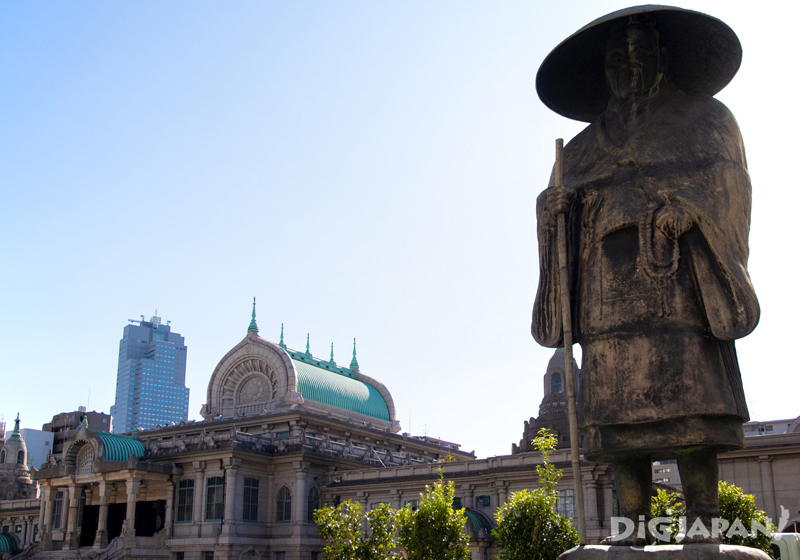
Here I found a lesser-known experience worth waking up for, and I'm going to share it with you! It includes an early morning Buddhist function, an amazing breakfast and some unique souvenir shopping.
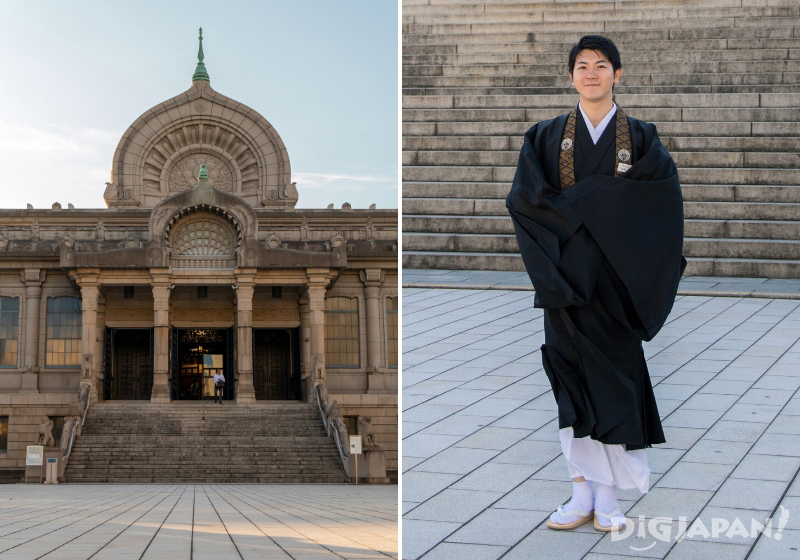
Tsukiji Hongwanji is a very modern, visitor-friendly Buddhist temple. Every morning at 7:00 they have a morning service called jinjo-gongyo (晨朝勤行). Entry is free and anybody is allowed to attend.
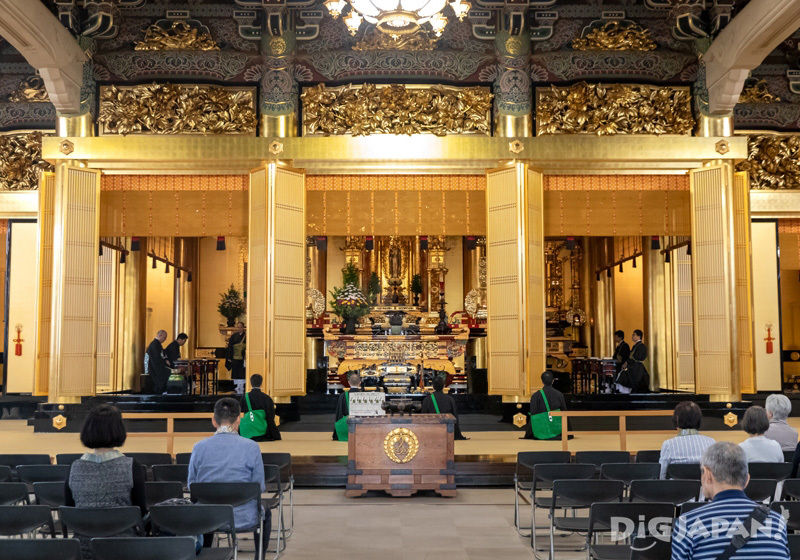
At the entrance are scripture books that people can borrow. Buddhist chants are hard to read even for Japanese people so the books have hiragana characters for the pronunciation. If you're studying Japanese this can be a good exercise!

Before I take a seat I walk up to the front and offer some incense. A sign shows the instructions for how to do it.
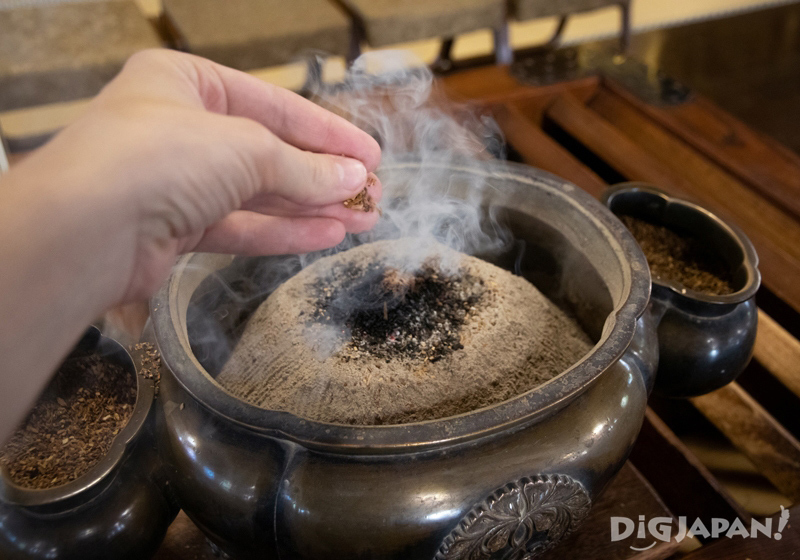
The service is divided in three parts: the dokkyo (sutra chanting), the houwa (Buddhist sermon), and the bukkyo-sanka (Buddhist song). Listening to the slow and continuous sutra chanting I fall into a dreamy peacefulness.
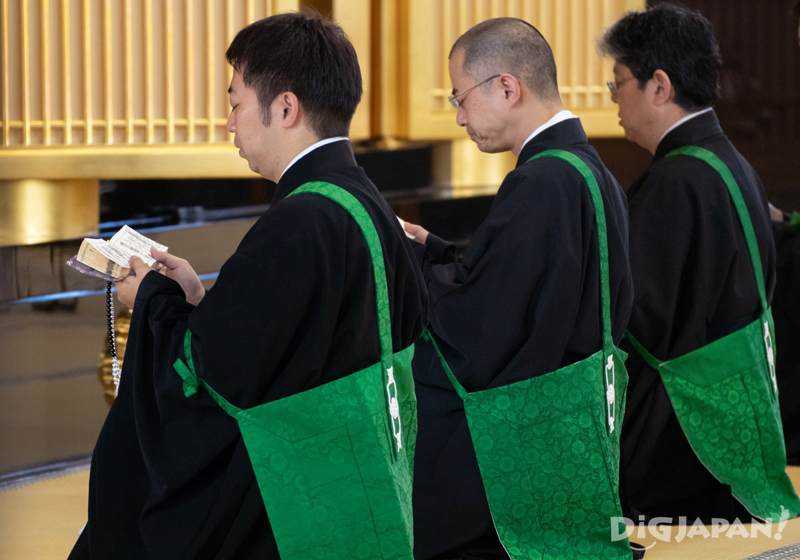
Kitamoto explains that this temple belongs to the Jodo Shinshu sect, which was established in the 13th century by a priest named Shinran. There are many young priests, and women are allowed to be priestesses too. People here don't have to shave their heads, either. The general feel is that of a very open and friendly temple.
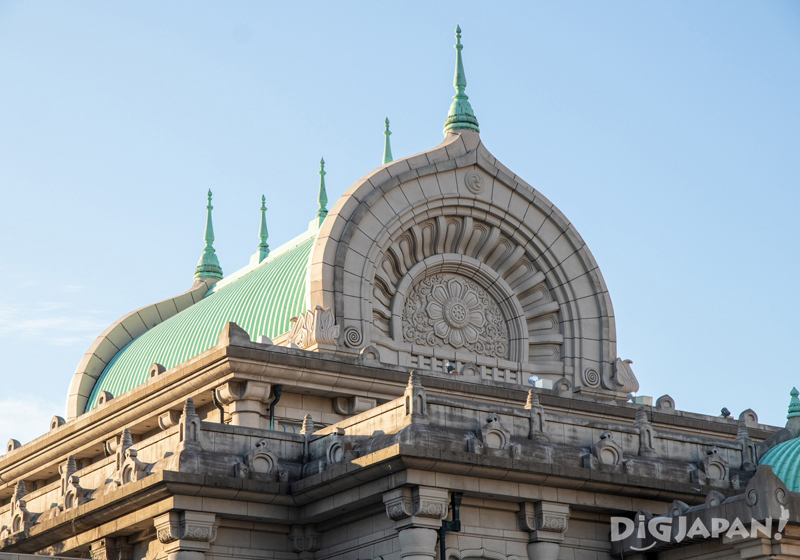
Tsukiji Hongwanji was originally built in 1617 in Asakusa. After being destroyed by a fire in 1657 it was rebuilt here in Tsukiji where it was destroyed once again by the Great Kanto Earthquake in 1923. The current temple was completed in 1934. It was designed by architect Ito Chuta. Different from most Japanese temples, it's made of stone instead of wood. The exterior was influenced by Indian Buddhist architecture.
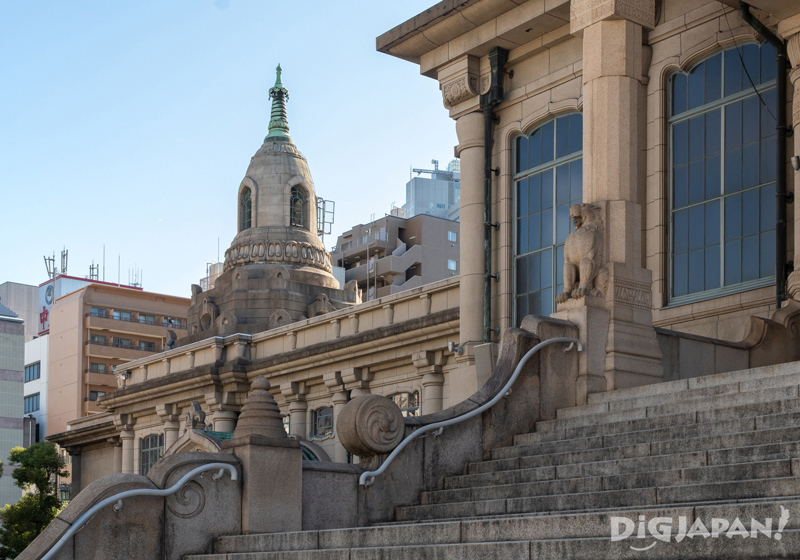
On the two sides of the main hall are the bell tower and the drum tower. While the drum tower doesn't host a drum anymore, the bell is still there and people can get up on the roof and ring it on New Year's Eve.

The interior is interesting as well. The altar side is made in traditional Jodo Shinshu style, but when I face the other side I have a little surprise. On the wall over the entrance are a massive pipe organ and stained glass windows. Kitamoto says that these Western elements were introduced to make the temple more welcoming and appeal to people in and outside of Japan. Every last Friday of the month the temple holds a free organ concert from 12:20 to 12:50.

Scattered around the temple grounds are a lot of animal statues. Apparently the architect had a passion for bizarre creatures and he included them in the temple's design.

The temple pamphlet is available in 10 languages! They even hold monthly sermons and lectures in English.
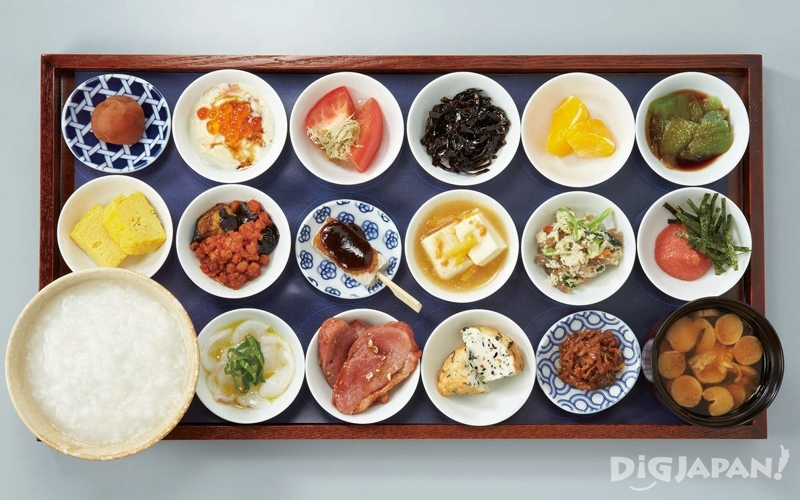
This amazing-looking breakfast plate is inspired by the 18th vow of Amitabha's forty-eight vows. It includes a bowl of okayu rice porridge, miso soup, and 16 different side dishes. There's fruit, fresh and cooked vegetables, meat, fish, tofu, eggs and so on! Every little plate has something different for a multi-colored, variegated breakfast.
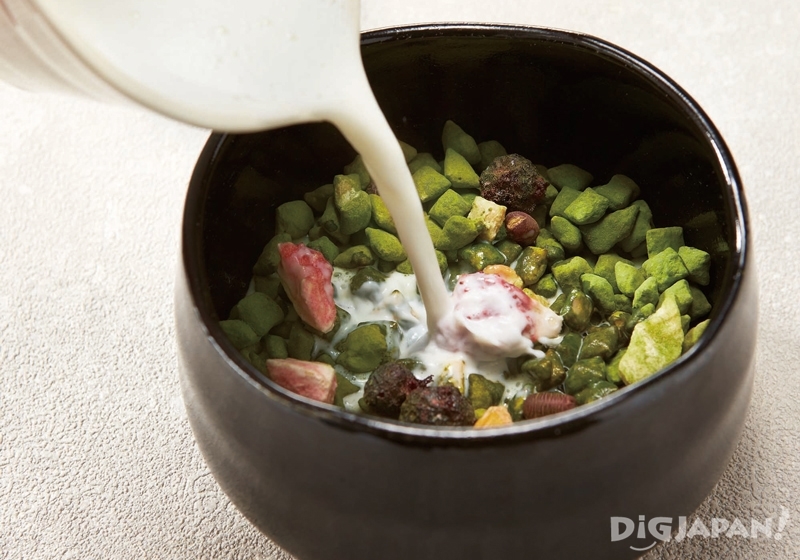
The menu includes other interesting breakfast items, like this Japanese style granola with Kyoto arare and Uji tea. I love how this dish mixes Eastern and Western styles.
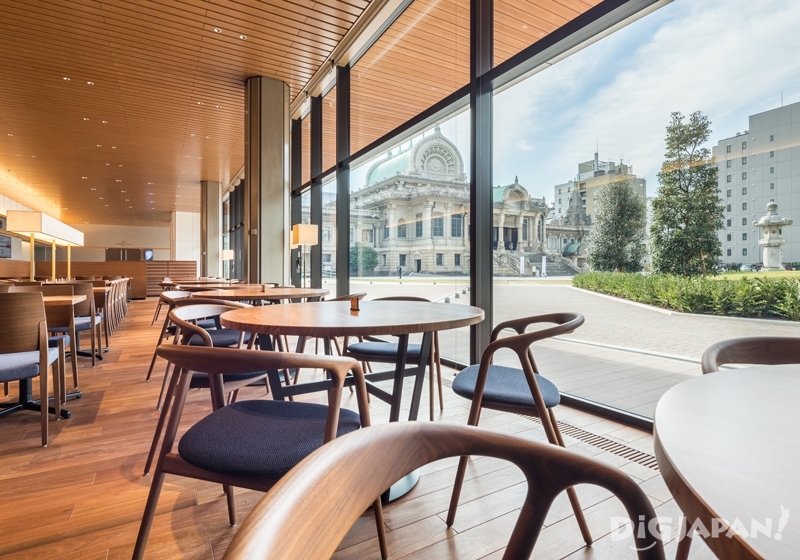
The café offers a wide variety of drinks, sweets and lunch sets. I recommend visiting on a weekday as it is usually very busy on weekends.
Hours: 8:00 a.m. - 9:00 p.m. (last order 8:30 p.m.)
Reservations not available
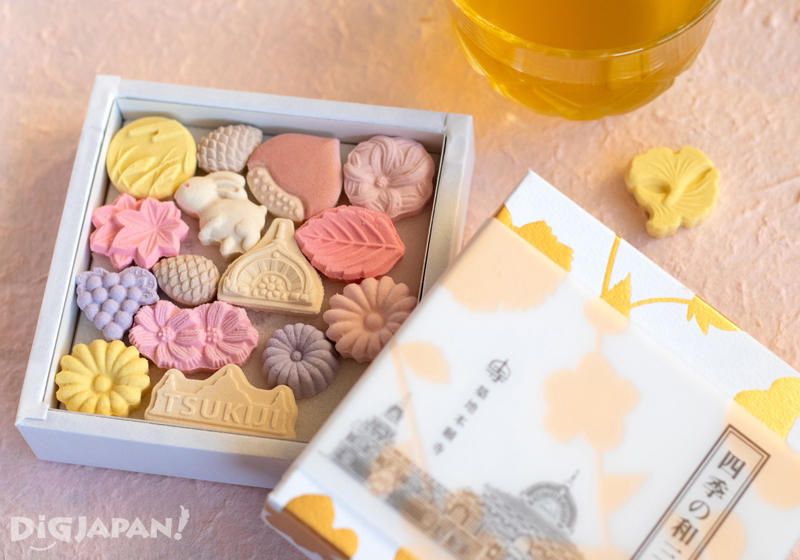
I settle for a box of Tsukiji Hongwanji original wasanbon sweets. Wasanbon is a fine-grained Japanese sugar that is pressed to make these delicate little sweets. They go great with some tea or coffee!
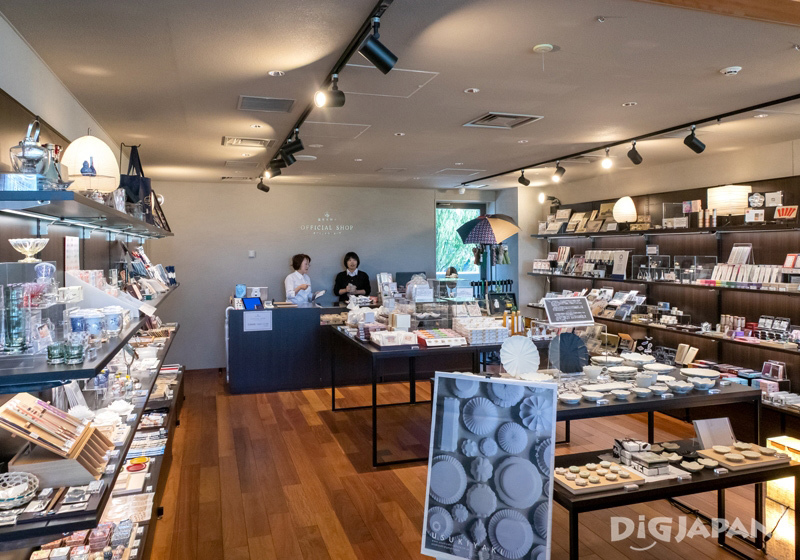
Hours: 9:00 a.m. - 5:00 p.m.

Address: 3-15-1 Tsukiji, Chuo-ku, Tokyo (MAP)
Visiting hours: April to September 6:00 a.m. - 5:30 p.m., October to March 6:00 a.m. - 5:00 p.m.
Official Website (Japanese-only): https://tsukijihongwanji.jp/
YouTube Channel
Instagram
*The above article is based on information from October 2019.
*Prices, business hours and other information in this article are subject to change.
About the Author
Laura is an Italian living and working in Tokyo. She loves exploring hidden and unknown places, taking pictures and listening to Punk Rock music. When she’s not busy doing the above, she might enjoy a craft beer or play the sanshin (an Okinawan instrument similar to a shamisen).
Now that the Tsukiji Market has relocated to Toyosu, it seems that the lonely district of Tsukiji doesn't have much more to offer on an early morning.
Or does it?
I didn't want to give up on Tsukiji so I started looking for more things to do in the area. My research led me to Tsukiji Hongwanji, a majestic and unusual Buddhist temple located just a block away from the former market.

Here I found a lesser-known experience worth waking up for, and I'm going to share it with you! It includes an early morning Buddhist function, an amazing breakfast and some unique souvenir shopping.
Attending the Morning Service
It's about 6:30 in the morning when I exit Tsukiji Station and make my way to the temple. The grounds are semi-deserted except for the occasional salaryman or local coming to join the morning service. Rev. Kitamoto is waiting for me outside the temple. He'll be my guide for the day.
Tsukiji Hongwanji is a very modern, visitor-friendly Buddhist temple. Every morning at 7:00 they have a morning service called jinjo-gongyo (晨朝勤行). Entry is free and anybody is allowed to attend.

At the entrance are scripture books that people can borrow. Buddhist chants are hard to read even for Japanese people so the books have hiragana characters for the pronunciation. If you're studying Japanese this can be a good exercise!

Before I take a seat I walk up to the front and offer some incense. A sign shows the instructions for how to do it.

The service is divided in three parts: the dokkyo (sutra chanting), the houwa (Buddhist sermon), and the bukkyo-sanka (Buddhist song). Listening to the slow and continuous sutra chanting I fall into a dreamy peacefulness.

The service is not strict at all: people can join and leave at any time.
Kitamoto explains that this temple belongs to the Jodo Shinshu sect, which was established in the 13th century by a priest named Shinran. There are many young priests, and women are allowed to be priestesses too. People here don't have to shave their heads, either. The general feel is that of a very open and friendly temple.
Exploring the Temple Grounds
The morning service lasts little less than an hour. After that I take a stroll around the temple grounds with Rev. Kitamoto.
Tsukiji Hongwanji was originally built in 1617 in Asakusa. After being destroyed by a fire in 1657 it was rebuilt here in Tsukiji where it was destroyed once again by the Great Kanto Earthquake in 1923. The current temple was completed in 1934. It was designed by architect Ito Chuta. Different from most Japanese temples, it's made of stone instead of wood. The exterior was influenced by Indian Buddhist architecture.

On the two sides of the main hall are the bell tower and the drum tower. While the drum tower doesn't host a drum anymore, the bell is still there and people can get up on the roof and ring it on New Year's Eve.

The interior is interesting as well. The altar side is made in traditional Jodo Shinshu style, but when I face the other side I have a little surprise. On the wall over the entrance are a massive pipe organ and stained glass windows. Kitamoto says that these Western elements were introduced to make the temple more welcoming and appeal to people in and outside of Japan. Every last Friday of the month the temple holds a free organ concert from 12:20 to 12:50.

Scattered around the temple grounds are a lot of animal statues. Apparently the architect had a passion for bizarre creatures and he included them in the temple's design.

The temple pamphlet is available in 10 languages! They even hold monthly sermons and lectures in English.
Time for Breakfast!
Right inside the temple grounds is Cafe Tsumugi, a stylish space devised by the Hongwanji Temple to give their visitors a place to relax. Their most popular dish is the breakfast set!
18 plates breakfast with free-refill okayu (rice porridge)
This amazing-looking breakfast plate is inspired by the 18th vow of Amitabha's forty-eight vows. It includes a bowl of okayu rice porridge, miso soup, and 16 different side dishes. There's fruit, fresh and cooked vegetables, meat, fish, tofu, eggs and so on! Every little plate has something different for a multi-colored, variegated breakfast.

The menu includes other interesting breakfast items, like this Japanese style granola with Kyoto arare and Uji tea. I love how this dish mixes Eastern and Western styles.

The café offers a wide variety of drinks, sweets and lunch sets. I recommend visiting on a weekday as it is usually very busy on weekends.
Information
Cafe Tsumugi | 築地本願寺カフェ TsumugiHours: 8:00 a.m. - 9:00 p.m. (last order 8:30 p.m.)
Reservations not available
Grabbing Some Tsukiji Hongwanji Originals
It's always nice to bring home something unique from the places we visit. Right next to Cafe Tsumugi is a little shop that sells Buddhism-related items as well as some sweets and souvenirs unique to Tsukiji Hongwanji.
I settle for a box of Tsukiji Hongwanji original wasanbon sweets. Wasanbon is a fine-grained Japanese sugar that is pressed to make these delicate little sweets. They go great with some tea or coffee!

Information
OFFICIAL SHOP | オフィシャルショップHours: 9:00 a.m. - 5:00 p.m.
Early Morning in Tsukiji Is Still a Thing
For an early start in Tokyo I definitely recommend Tsukiji Hongwanji. It's a great chance to savor a little piece of Tokyo's everyday life, find some peace, and enjoy great food.
Information
Tsukiji Hongwanji | 築地本願寺Address: 3-15-1 Tsukiji, Chuo-ku, Tokyo (MAP)
Visiting hours: April to September 6:00 a.m. - 5:30 p.m., October to March 6:00 a.m. - 5:00 p.m.
Official Website (Japanese-only): https://tsukijihongwanji.jp/
YouTube Channel
*The above article is based on information from October 2019.
*Prices, business hours and other information in this article are subject to change.
About the Author
Laura is an Italian living and working in Tokyo. She loves exploring hidden and unknown places, taking pictures and listening to Punk Rock music. When she’s not busy doing the above, she might enjoy a craft beer or play the sanshin (an Okinawan instrument similar to a shamisen).

Liked this story? Like DiGJAPAN!
on Facebook for daily updates!
THIS ARTICLE IS BASED ON INFORMATION FROM 12 24,2019 Author:DiGJAPAN! Editorial Team






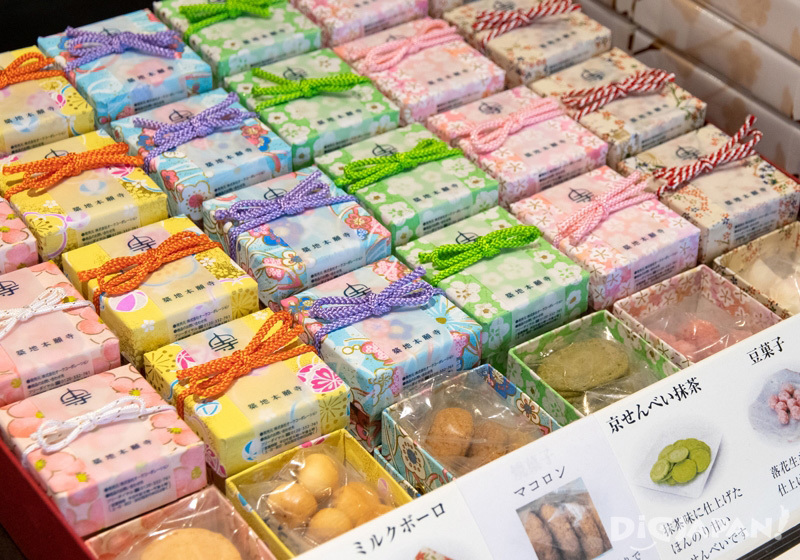
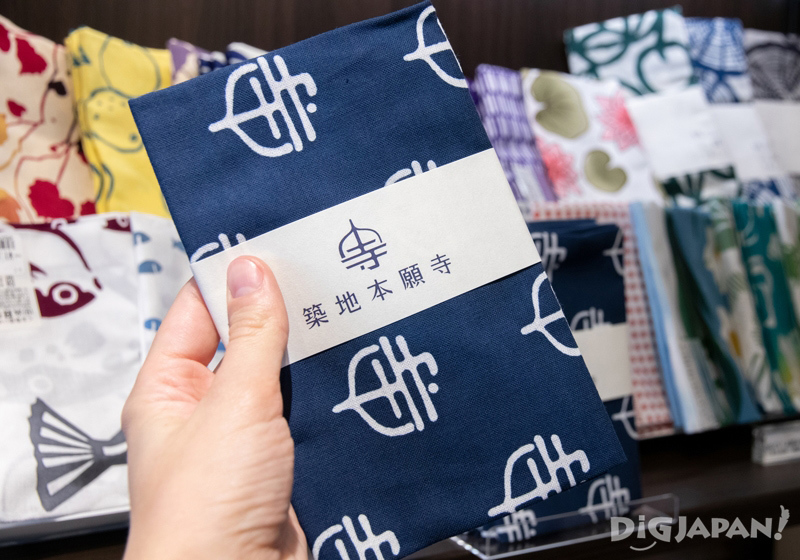








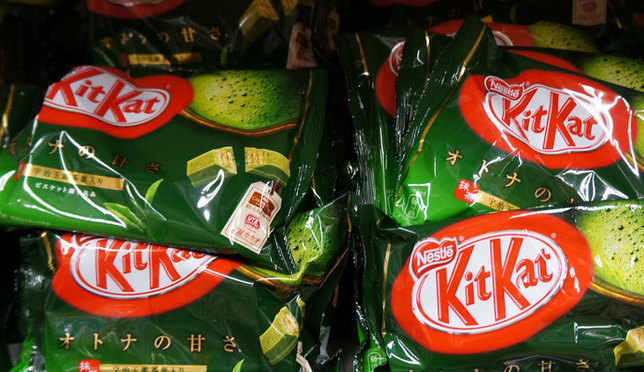
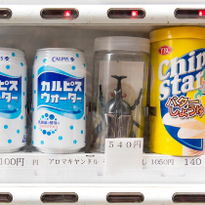

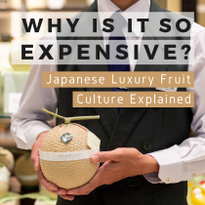





NEW COMMENT | 0 COMMENTS
Open a DiGJAPAN!
account to comment.
Open a DiGJAPAN! Account